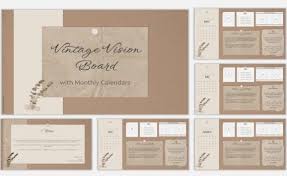The Power of Templates in Design
In the world of design, templates play a crucial role in streamlining the creative process and enhancing productivity. Whether you are a graphic designer, web developer, or content creator, templates provide a foundation upon which to build stunning visuals and engaging content.
Efficiency and Consistency
One of the key advantages of using templates is the efficiency they bring to design projects. By having pre-designed layouts and structures at your disposal, you can save valuable time that would otherwise be spent on repetitive tasks. Moreover, templates ensure consistency across different elements of a project, maintaining a cohesive look and feel throughout.
Customisation and Flexibility
While templates provide a solid starting point for your designs, they also offer ample room for customisation and personalisation. Whether it’s adjusting colours, fonts, or layouts, templates can be tailored to suit specific needs and preferences. This flexibility allows designers to experiment with different variations while maintaining overall coherence.
Professionalism and Brand Identity
Utilising templates can elevate the professionalism of your work by presenting polished and well-structured designs. For businesses and individuals looking to establish a strong brand identity, templates offer a consistent visual language that reinforces brand recognition. By incorporating brand elements into templates, such as logos and colour schemes, you can create a cohesive brand experience across various platforms.
Accessibility and Collaboration
Templates also promote accessibility and collaboration within design teams. By using standardised templates, team members can easily share files, work on common projects, and maintain version control. This collaborative approach fosters creativity and ensures that everyone is aligned towards achieving the same design goals.
Conclusion
In conclusion, templates serve as invaluable tools in the world of design by enhancing efficiency, promoting consistency, enabling customisation, reinforcing professionalism, supporting brand identity, facilitating collaboration, among other benefits. Whether you are creating websites, marketing materials, presentations or any other visual content – incorporating templates into your workflow can significantly boost your creative output.
Six Essential Tips for Crafting an Effective and User-Friendly Template
- Ensure the template is user-friendly and easy to navigate.
- Use a consistent design and layout throughout the template.
- Customise the template to suit your specific needs and requirements.
- Regularly update and maintain the template to keep it relevant.
- Test the template across different devices to ensure compatibility.
- Seek feedback from users to improve the template’s effectiveness.
Ensure the template is user-friendly and easy to navigate.
When utilising a template for design purposes, it is essential to ensure that the template is user-friendly and easy to navigate. A well-structured and intuitive template not only saves time but also enhances the overall user experience. By prioritising usability in template selection, designers can streamline their workflow, promote efficiency, and ultimately deliver more polished and engaging designs.
Use a consistent design and layout throughout the template.
When utilising templates, it is essential to maintain a consistent design and layout across all elements. By adhering to a uniform visual style, including colours, fonts, spacing, and overall structure, you ensure coherence and professionalism in your work. Consistency not only enhances the aesthetic appeal of your designs but also reinforces brand identity and improves user experience. A cohesive design and layout throughout the template create a sense of unity and clarity, making it easier for viewers to navigate and engage with the content effectively.
Customise the template to suit your specific needs and requirements.
When working with templates, it is essential to customise them to align with your specific needs and requirements. By tailoring the template to reflect your unique style, branding elements, and content, you can create a design that truly resonates with your audience. Customisation allows you to infuse your personality and creativity into the template, making it distinctively yours while maintaining a professional and cohesive look. Embracing this tip ensures that the template serves as a versatile foundation for your creative vision to flourish.
Regularly update and maintain the template to keep it relevant.
Ensuring the ongoing relevance of a template is essential for its effectiveness in design projects. By regularly updating and maintaining the template, designers can adapt to changing trends, technologies, and audience preferences. This practice not only keeps the design current and aligned with industry standards but also allows for continuous improvement and innovation. By staying proactive in updating templates, designers can ensure that their work remains fresh, engaging, and impactful over time.
Test the template across different devices to ensure compatibility.
Testing the template across various devices is a crucial step to guarantee compatibility and optimal user experience. By assessing how the design adapts to different screen sizes, resolutions, and functionalities, designers can identify any potential issues and make necessary adjustments. Ensuring that the template performs seamlessly across desktops, laptops, tablets, and mobile devices not only enhances usability but also reflects a commitment to delivering a consistent and accessible design for all users.
Seek feedback from users to improve the template’s effectiveness.
Seeking feedback from users is a crucial step in enhancing the effectiveness of a template. By gathering insights and suggestions directly from those who interact with the design, you can identify areas for improvement and refine the template to better meet user needs. User feedback provides valuable perspectives that can lead to adjustments in layout, functionality, and overall user experience, ultimately resulting in a more user-friendly and impactful template.
